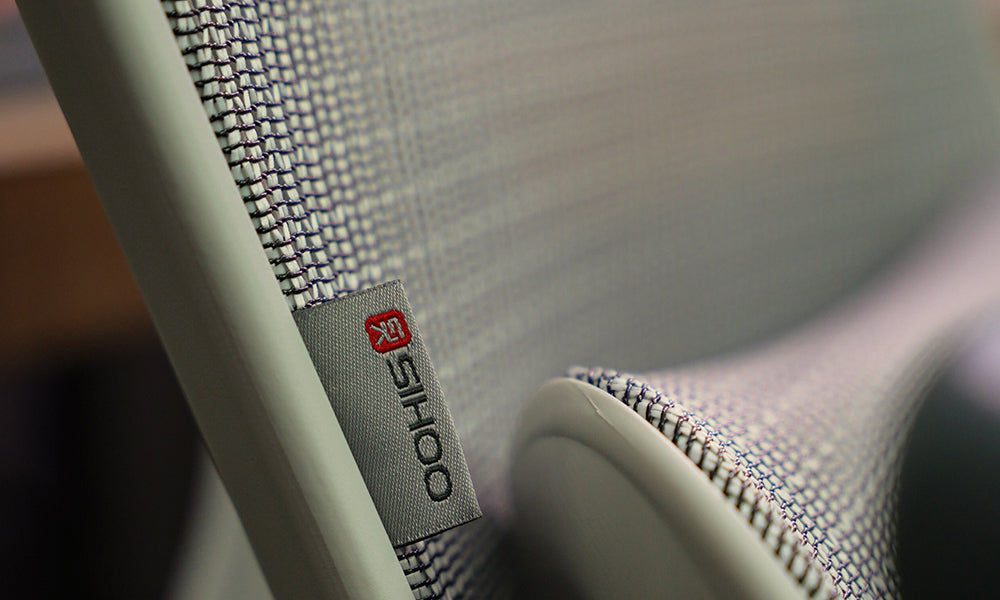The choice between ergonomic office chairs and traditional chairs can greatly impact productivity, health, and overall well-being. In this article, we will delve into the key differences between ergonomic office chairs and traditional chairs, exploring the reasons why investing in comfort is not just a luxury but a strategic decision for individuals and businesses alike.
I. Understanding Ergonomic Office Chairs:
Ergonomic office chairs are designed with the human body's biomechanics in mind. These chairs are crafted to provide optimal support to the spine, promote good posture, and reduce the risk of musculoskeletal issues associated with prolonged sitting. Here are some key features that distinguish ergonomic office chairs:
Adjustability:
Ergonomic chairs come with a range of adjustable features, including seat height, lumbar support, armrests, and recline options. This adaptability allows users to customize the chair to their specific body dimensions and preferences, ensuring a comfortable and supportive seating experience.
Lumbar Support:
Proper lumbar support is crucial for maintaining the natural curve of the spine. Ergonomic chairs typically feature adjustable lumbar support, providing targeted support to the lower back and preventing slouching, a common issue with traditional chairs.
Posture Improvement:
Ergonomic chairs are designed to promote a neutral sitting position, helping users maintain good posture throughout the day. This not only reduces the risk of back pain but also enhances overall comfort and concentration.
Breathable Materials:
Many ergonomic chairs are constructed using breathable materials that promote air circulation, preventing discomfort and sweat buildup during extended periods of sitting.
II. The Pitfalls of Traditional Chairs:
While traditional chairs may be aesthetically pleasing or budget-friendly, they often lack the ergonomic features necessary for prolonged comfort and health. Here are some shortcomings of traditional chairs:
Limited Adjustability:
Traditional chairs typically offer limited adjustability, if any at all. This one-size-fits-all approach can lead to discomfort, especially for individuals with different body types and preferences.
Poor Lumbar Support:
The majority of traditional chairs lack adequate lumbar support, which can result in poor posture and contribute to back pain over time. The absence of targeted lower back support is a significant drawback for those who spend long hours at a desk.
Static Design:
Traditional chairs are often designed with a fixed structure that does not adapt to the natural movements of the body. This static design can lead to stiffness, discomfort, and reduced circulation during extended periods of sitting.
Impact on Productivity:
Discomfort caused by traditional chairs can have a direct impact on productivity. Employees who are uncomfortable are more likely to take frequent breaks or experience distractions, hindering their ability to focus on tasks.
III. Health Benefits of Ergonomic Chairs:
Investing in ergonomic office chairs goes beyond mere comfort; it directly contributes to the long-term health and well-being of individuals. Here are some health benefits associated with using ergonomic chairs:
Prevention of Musculoskeletal Issues:
Ergonomic chairs are designed to reduce the risk of musculoskeletal problems such as back pain, neck strain, and shoulder discomfort. By promoting proper alignment and support, these chairs help prevent the development of chronic conditions associated with poor posture.
Improved Circulation:
The ergonomic design of these chairs often includes features that enhance blood circulation. Proper circulation is essential for reducing the risk of numbness, tingling, and long-term health issues related to poor blood flow.
Enhanced Focus and Productivity:
Comfortable seating positively impacts concentration and productivity. Ergonomic chairs enable individuals to maintain focus for longer periods, reducing the need for frequent breaks and distractions.
Reduced Fatigue:
Prolonged sitting in traditional chairs can lead to fatigue and discomfort. Ergonomic chairs, with their adjustable features and supportive design, help reduce physical strain, keeping individuals energized and focused throughout the workday.
IV. Business Considerations:
For businesses, the choice between ergonomic office chairs and traditional chairs is not merely about employee comfort—it's a strategic investment in the company's success. Here's why businesses should prioritize ergonomic seating:
Employee Retention and Satisfaction:
Providing ergonomic chairs signals to employees that their well-being is a priority for the company. This can contribute to higher job satisfaction, employee retention, and a positive workplace culture.
Reduced Healthcare Costs:
Ergonomic chairs can contribute to a healthier workforce, reducing the likelihood of employees developing musculoskeletal issues that may lead to costly medical treatments and absenteeism.
Increased Productivity:
Comfortable employees are more likely to be focused and productive. By investing in ergonomic seating, businesses can enhance employee performance and contribute to the overall success of the organization.
Demonstrating Corporate Responsibility:
Companies that prioritize the health and comfort of their employees demonstrate a commitment to corporate responsibility. This can enhance the company's reputation, making it an attractive workplace for top talent.
V. Making the Switch: Tips for Transitioning to Ergonomic Chairs:
For individuals or businesses considering the switch to ergonomic office chairs, here are some tips for a smooth transition:
Employee Education:
Provide information and training on the benefits of ergonomic seating. Educate employees on how to adjust their chairs for optimal comfort and encourage them to take advantage of the available features.
Gradual Implementation:
If budget constraints are a concern, consider a phased approach to implementing ergonomic chairs. Start with key areas or departments and gradually expand the transition over time.
Trial Periods:
Offer employees the opportunity to try out ergonomic chairs on a trial basis. This allows individuals to experience the benefits firsthand and provides valuable feedback for fine-tuning the selection process.
Consultation with Ergonomic Experts:
Consider consulting with ergonomic experts or occupational health professionals to ensure that the chosen chairs meet the specific needs of the workforce. Their insights can help tailor the selection to the unique requirements of the individuals using the chairs.
VI. Conclusion:
In the ongoing debate between ergonomic office chairs and traditional chairs, the evidence overwhelmingly supports the benefits of investing in comfort. Ergonomic chairs go beyond mere aesthetics, offering a range of features that contribute to the health, well-being, and productivity of individuals in a professional setting.
As the understanding of the impact of sedentary work on health continues to grow, the choice of seating becomes increasingly critical. Whether for personal use or within a corporate environment, the decision to invest in ergonomic office chairs is an investment in the long-term success and happiness of individuals and the organizations they contribute to. In the ever-evolving landscape of the modern workplace, comfort is not just a luxury—it's a strategic necessity.






Dejar un comentario
Este sitio está protegido por hCaptcha y se aplican la Política de privacidad de hCaptcha y los Términos del servicio.